Keywords
Female European silver eel, Morphometric/biometric indices, Göksu Delta, Turkey
Introduction
European eel (Anguilla anguilla, Linnaeus 1758) is a catadromous species found in all Eu-ropean rivers draining to the Mediterranean, North and Baltic seas, in the Atlantic south to Canary Islands and parts of Mediterranean north Africa and Asia (Freyhof and Kottelat, 2008). European eel is also found in Turkish rivers and streams draining to Mediterranean, Aegean, Marmara and Black Sea (Kuru, 1996; Geldiay and Balik, 2002).
The European eel population has been declin-ing over the last 30 years. Currently the stock is considered outside safe biological limits and the fishery regarded as not sustainable by Interna-tional Council for the Exploration of the Seas (ICES) and European Inland Advisory Commis-sion (EIFAC). The International Union for Con-servation of the Nature (IUCN) has thereby clas-sified the European eel as “critically endangered” species (Bilotta et al., 2011; Farrugio and Elie, 2011). Mediterranean production of European silver and yellow eel has also followed the worldwide trend where production has decreased from 4000-5000 mt in 1980s to 700 tont in 2007 (Farrugio, 2010; Farrugio and Elie, 2011). Fisher-ies statistics published by Turkish Institute of Statistics (TURKSTAT) also reveal that capture fisheries production of eel (Yellow and silver stages) in Turkey has also been declining since its peak (756 mt) in 1988. Catch levels have been below 200 mt in the new millennium and was re-ported as 158 mt for 2009 (TURKSTAT, various years).
In accordance with scientific advice from ICES and to help the recovery of eel population, European Commission (EC) has established leg-islation (Regulation No. 1100/2007) calling for all member states with natural A. anguilla habits to develop “Eel Management Plans”. The objec-tive of the plan is to reduce anthropogenic mor-talities to allow with high probability the es-capement of at least 40% of the silver eel bio-mass to the sea. The principle idea behind this conservation approach is that escapement of suf-ficient sock of silver eels for spawning would have a proportional positive contribution to re-cruitment (Yokouchi, et al., 2009; Farrugio, 2010; Farrugio and Elie, 2011; Bilotta et al., 2011).
Silvering is a complex mechanism and before departure for spawning ground, eels undergo sev-eral morphological and physiological changes from yellow non-migratory and sexually imma-ture stage to silver migratory phase where sexual maturation begins (Vettier et al., 2005; Palstra et al., 2010). Investigating morphometric and bio-metric characteristics of sedentary yellow and migrating silver eel stages and identifying easily measurable and reliable criterion for distinguish-ing migrating silver eels are fundamental compo-nent of assessing silver eel biomass and thereby implementation of “Eel Management Plan”.
Even though skin color is generally used as an indication of yellow and silver stages, this crite-rion is not always reliable and sufficient to dis-tinguish migratory individuals (Durif et al., 2009). Several studies have reported morphological transformation indices like eye diameter and pectoral fin length as well as biometric character-istics such as gonad and liver mass shedding light on silvering process (Pankhurst, 1982; Beullens et al., 1997; Marchelidon et al., 1999; Acou et al., 2003; Durif et al., 2005; Ginneken et al., 2007; Durif et al., 2009; Yokouchi, et al., 2009). Some of these studies have further focused on propos-ing threshold values for ocular and gonadosomat-ic indices (Acou et al., 2003) or have developed indices (Silver index) based on some easily measurable morphometric characteristics such as body length, body weight, pectoral fin length and eye diameter to identify migrating silver eels from external measurement (Durif et al., 2005; Durif et al., 2009).
Existing morphometric/biometric criterion and threshold values for identifying silvering stage are either from studies on eels kept in cap-tivity (Pankhurst, 1982; Beullens et al., 1997) or are derived from investigations on European eels caught from their natural environments belonging to different locations in Europe e.g. France, Netherland, Poland and Ireland (Marchelidon, et al, 1999; Acou et al., 2003; Robak, 2005; Durif et al., 2005; Ginneken et al., 2007; Durif et al., 2009; Yokouchi, et al., 2009). Farrugio and Elie (2011) underline the spatial diversity of the Eu-ropean eel population and the fact that part of this population may be specific to Mediterranean. They further stress that the biological and ecolog-ical characteristics between Northern and South-ern parts of the distribution area are very differ-ent. And conclude that if any protection measure is to be adapted by the exploiting countries, some preliminary information on European eel popula-tion in the Mediterranean hydrosystems need to be collected. Amilhat et al. (2008) also stress that although European eels from Atlantic side have been well studied; only few studies have been conducted on the Mediterranean side.
Turkey is located on the Eastern Mediterrane-an and is one of the main five producers of Euro-pean eel in the Mediterranean region along with Italy, France, Tunisia and Albania (Farrugio and Elie, 2011). However; the context of research and information on eel population in Turkey is indeed poor. Studies on growth, feeding habits, hemato-logical parameters and migratory life history of European eel from different habitats in Turkey do exists (Yalçin-Özdilek et al, 2006; Yalçin-Özdilek; Solak, 2007; Sahan et al., 2007; Genç et al., 2008; Lin et al., 2011) but studies on charac-teristics of migrating silver eels which would contribute to implementation of any conservation measure or management plan are lacking. Göksu delta situated on the Turkish Mediterranean coast is one of the main habitats of European eel in Turkey. This preliminary study was therefore conducted to shed light on characterization of migrating female silver and sedentary yellow eels in Göksu Delta by providing some basic mor-phometric and biometric parameters indices.
Materials and Methods
Fish Sampling
This study was conducted in Göksu delta (Mersin/Turkey), an important wetland in Eastern Mediterranean region of Turkey (Figure 1) where Göksu River drains into Mediterranean Sea.
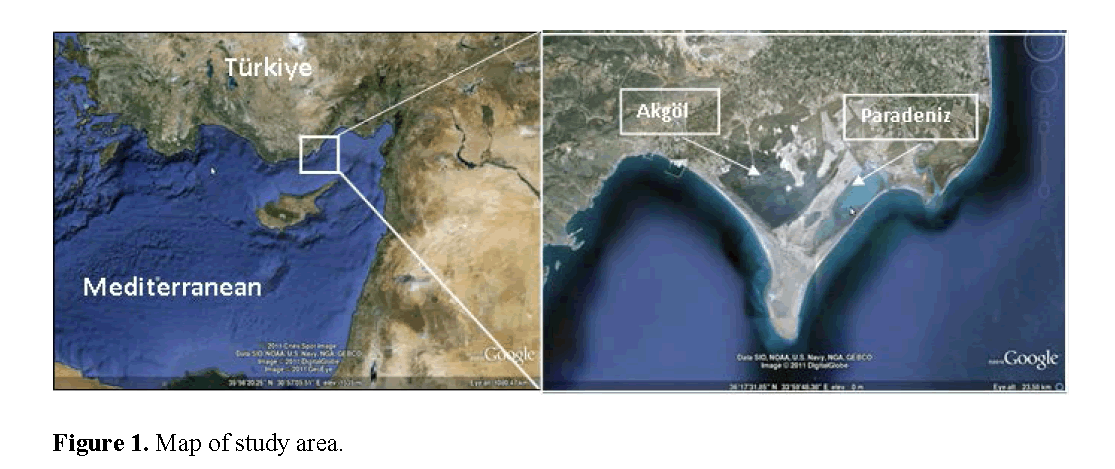
Figure 1: Map of study area.
Göksu delta (15.000 ha) which extends from 36o 18’ North to 33o 58’ East, is included in Ram-sar List of Wetland of International Importance. The Delta is further classified as a special envi-ronmental protection zone by Ministry of Envi-ronment and Forest (Anonymous, 2009). The Delta includes the Göksu River, the large lakes of Akgöl and Paradeniz, a small lake called Kugu Gölü and a network of drainage canals in the sur-rounding agricultural lands. Paradeniz (492 ha) and smaller Kugu lakes are open saline lagoons with little vegetation. The maximum water depth in Paradeniz lagoon is 1.5 m. It is connected to the Mediterranean Sea via a canal and to Akgöl via Kugu lagoon. Two drainage canals run in to Akgöl (820 ha) from east and north of the lake and once a semi-permanent hyper-saline lake with no connection to the sea is now a freshwater to brackish eutrophic lake. The lake is 0.5-1.0 m in depth and with abundant reed beds (Green, 1998; Anonymous, 2009). Water temperatures range between 10-32 oC and 10-29 oC for Akgöl and Paradeniz respectively. Salinity values are reported as 1-4 ppt for Akgöl and 12-39 ppt for Paradeniz (Velioglu et al., 2010).
Eels (Yellow and silver) in the delta are caught either by fyke nets or through traditional wooden “dalyan”, which is basically a fishing ar-rangement composed of fixed barriers and catch-ing chambers installed on canals connecting the lagoons to the sea to trap the fish during their mi-gration (Image 1). Both migrating silver and yel-low eel samples were obtained from fishing co-operative running the fishing activities in the del-ta. Based on observation of fishermen, November-February was believed to be the period of downstream migration for silver eels in Göksu Delta. Therefore; silver eels trapped and collected from catching chamber of the dalyan (installed on the canal between the Mediterranean and the Pa-radeniz lagoon) during this period were regarded as “migrant” samples. Yellow eels caught by fyke nets from Akgöl Lake during the same sam-pling period were regarded as resident/sedentary yellow eel samples. Sampling was carried out from 2007 to 2010 during November-February depending on availability.
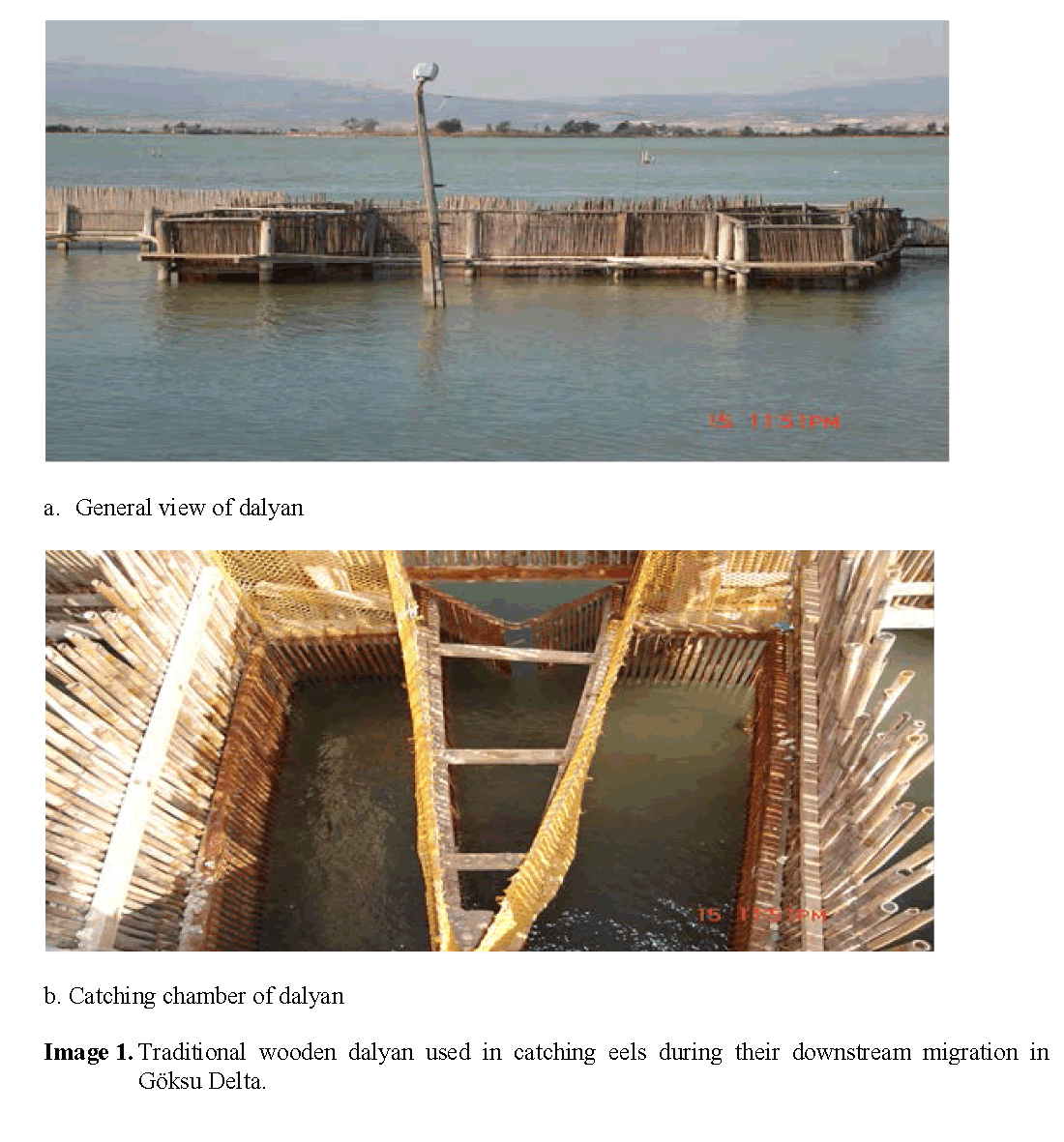
Image 1: Traditional wooden dalyan used in catching eels during their downstream migration in Göksu Delta.
Morphometric/Biometric Measurements and In-dices
Total length (LT) and body weight (M) of all eel samples arriving at the laboratory were de-termined to nearest cm and g. respectively. Verti-cal and horizontal diameters (mm) of both eyes were measured using a digital veriner caliper to calculate eye index (IE). Length of pectoral fin was also measured to find (IF). Fish were then dissected to remove gonads and liver (Image 2). Gonads and liver were weighed to calculate bio-metric indices i.e. gonado-somatic (IG) and hepa-to-somatic (IL) index.
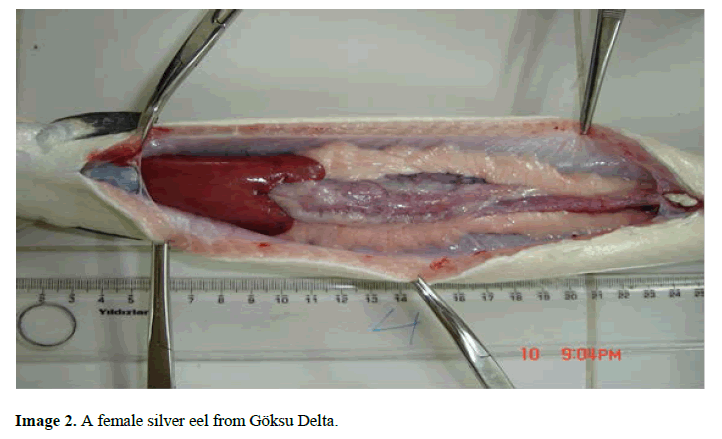
Image 2: A female silver eel from Göksu Delta.
Morphometric indices were calculated as follow-ing:
Eye index (IE) = [(Dv + Dh / 4)2 x π/LT] x 100 (Pankurst, 1982: From Ginnneken et al., 2007)
Where;
Dv= Vertical eye diameter (mm)
Dh = Horizontal eye diameter (mm)
LT= Total length (mm)
Fin index (IF) = ( LP / LT) x 100 (From Durif, et al, 2000)
Where;
LP = Length of pectoral fin (mm)
Fultons’s condition factor (K) = 100xBWxLT -3
Where;
BW = Body weight (g)
The two biometric indices namely gonado-somatic (IG) and hepato-somatic index (IL) were calculated as following:
Gonado-somatic index (IG) = (GW BW-1) x 100%
Where;
GW = Weight of gonads (g)
Hepato-somatic index (IL) = (LW BW-1) x 100%
Where;
LW = The weight of liver (g)
Sex Determination
All eel samples arrived at the laboratory were sexed according to Krueger and Oliveira (1997) using the aceto-carmine gonad squash tech-niques.
Statistical Analysis
Distributions of morphological-biometric pa-rameters/indices for migrating silver and seden-tary yellow eels were tested for normality by Shapiro Wilk Test. Student t test was used to compare the mean values of parame-ters/indicesfor each group. The correlation be-tween body weight, total length, gonad weight, liver weight, eye index (IE), fin index (IF), gona-do-somatic index (IG), hepato-somatic index (IL) and condition factor (K) of silver and yellow eels were assessed by Pearson Correlation Coeffi-cient. Statistical analysis were carried out using SPSS 11.5. for each group. The correlation be-tween body weight, total length, gonad weight, liver weight, eye index (IE), fin index (IF), gona-do-somatic index (IG), hepato-somatic index (IL) and condition factor (K) of silver and yellow eels were assessed by Pearson Correlation Coeffi-cient. Statistical analysis were carried out using SPSS 11.5.
Results and Discussion
All silver eels samples (n=18) collected from catching chamber of dalyan (Fixed barriers) were found to be female (Image 3). Out of 48 yellow eel samples caught by fyke nets 38 were deter-mined to be female and were included in the sta-tistical assessments and analysis. Mean values of morphological-biometric parameters and indices of migrating female silver and yellow eels in Göksu delta are presented in Table 1.

Image 3: Microscopic image of ovary.
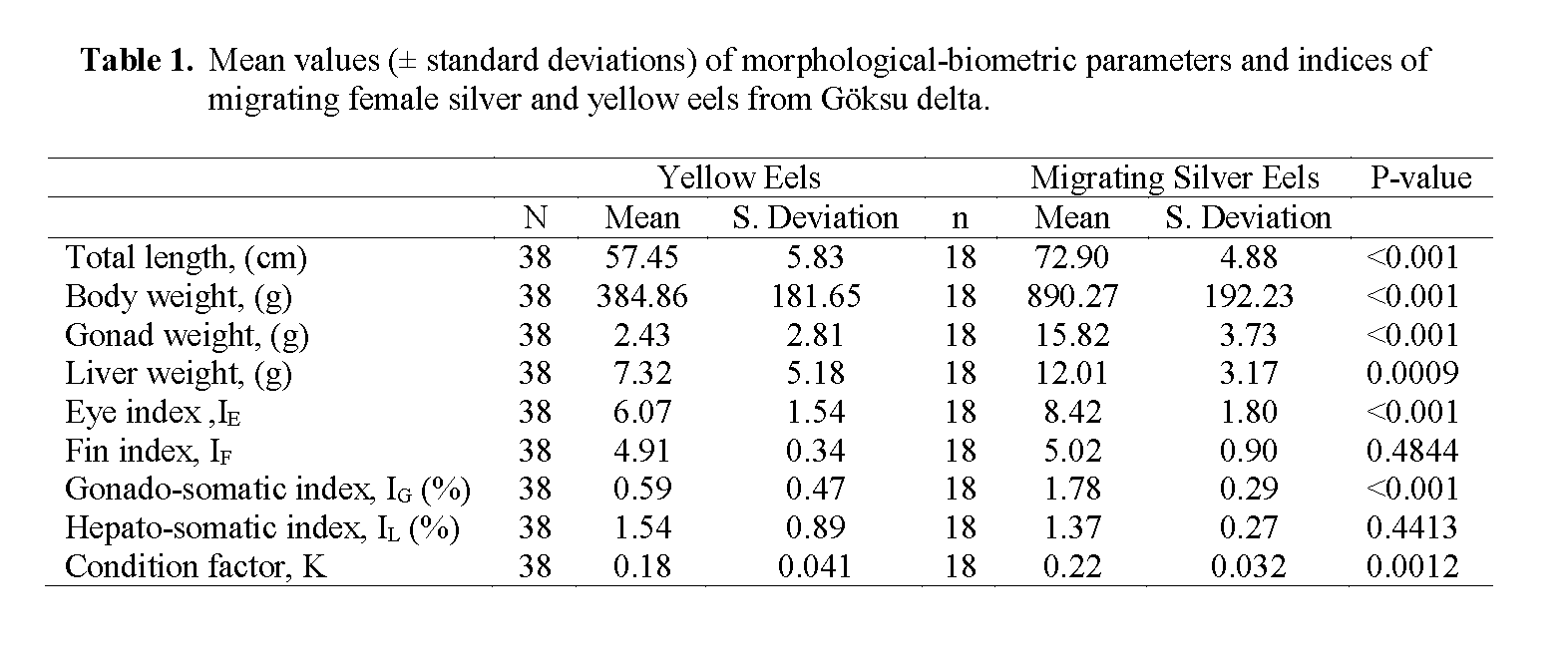
Table 1: Mean values (± standard deviations) of morphological-biometric parameters and indices of migrating female silver and yellow eels from Göksu delta.
Values of mean total length and body weight of migrating silver eels was found to be 72.90 cm and 890.27 g respectively while in female yellow eels, mean total body length was measured as 57.45 cm and mean body weight was found to be 384.86 g. Gonado-somatic (IG) and eye index (IE) of migrating silver eels were found as 1.78 ±0.29 and 8.42 ±1.80 respectively. Mean values of total length, body weigh, gonad weigh, liver weight, IE, IG and condition factor (K) of migrat-ing silver were significantly higher than those of yellow eels (P<0.001). However; the differences between mean values of fin (IF) and hepato-somatic index (IL) in silver and yellow eels were not statistically significant (P>0.05) (Table 1).
Correlation matrix of morphological-biometric parameters and indices of female yel-low and silver eels are presented in Table 2 & 3. Though a number of significant correlations with various degrees of strength were found among/between morphological (total length, body weight) and biometric (gonad and liver weight) parameters, significant correlations be-tween morphological-biometric parameters and indices were few and not always meaningful and informative. In yellow eels total length was posi-tively correlated with body weight (r2=0.9247), gonad weight (r2=0.5933) and liver weight (r2=0.7799). Similar correlations were also found for silver eels. However; in silver eels the posi-tive correlation between total length and body weight was weaker (r2=0.7421). Both in yellow and silver eels body weights were positively cor-related with gonad and liver weights. In silver eels gonad weight was positively correlated with liver weight (r2=0.6821) and negatively correlat-ed with IF (r2= -0.6093). K was found to be posi-tively correlated with IE (r2=0.6892) and nega-tively correlated with IG (r2=-0.5526) and IL (r2=-0.5903) in silver eels. There was also a negative correlation between IG and IF (r2= -0.7444) in sil-ver eels.
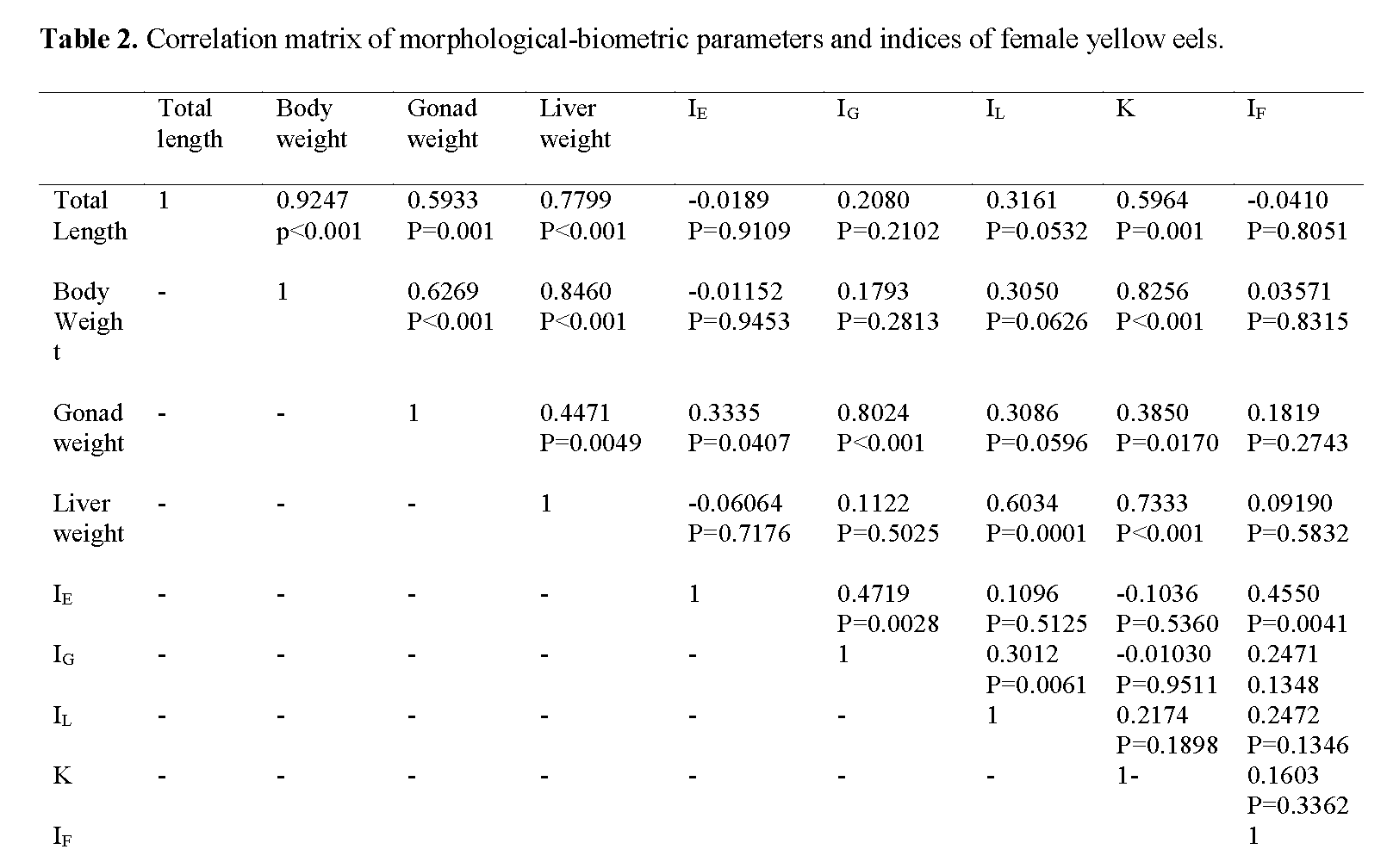
Table 2: Correlation matrix of morphological-biometric parameters and indices of female yellow eels.
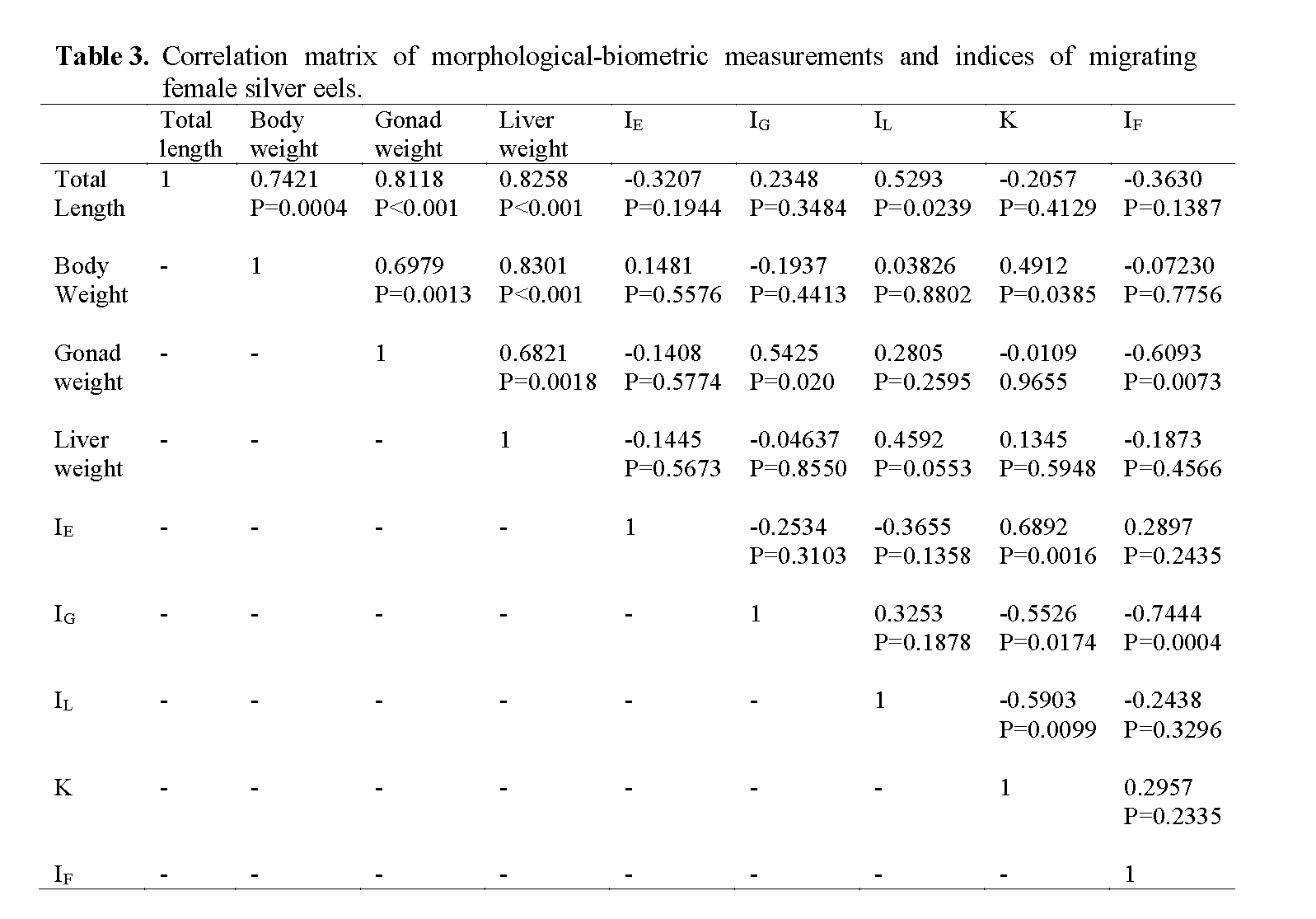
Table 3: Correlation matrix of morphological-biometric measurements and indices of migrating female silver eels.
This study is the first attempt on investigation of morphological/biometric characteristics of mi-grating female silver eels in Göksu delta in Tur-key and thereby, has its own shortcomings and limitations in terms of sampling scheme e.g. sample size and use of samples provided by commercial eel fisheries. However; results ob-tained do shed light on morphological/biometric characteristics of migrating female silver eels from Göksu Delta and as far as literature reviews reveal, findings of this study constitute the first set of data on morphological-biometric parame-ters and indices of migrating female silver eels from Eastern Mediterranean region.
Accordingly, mean body weight and total length of migrating silver eels from Göksu Delta were found to be 890.27 ±192.23 g and 72.90 ±4.88 cm respectively. Mean body weight and length for female silver eels from Great Mazurian Lakes (Poland) have been reported as 468.0 ±11.371 g and 64.5 ±8.293 cm respectively by (Robak, 2005). For female silver eels from North of France (Somme) values of mean body weight and length have been documented as 277 ±8 g and 54.89 ±0.57 cm respectively by Aroua et al. (2005). Mean body weight and length of female silver eels from Rhine river have been reported as 609 ±35 g and 66.86 ±1.51 cm respectively for samples collected during 1996-1998 and as 560 ±53 g and 65.33 ±1.92 cm for samples collected in 2002 ( Aroua et al., 2005). Differences be-tween mean size of silver eels from Göksu Delta and those from other locations is not an extraor-dinary situation since size (length) of silver eels could vary from one site to another (Durif et al., 2005). Lefebvre et al. (2003) have reported sig-nificant differences in size (length) of female sil-ver eels even from two sites in the same delta (Rhone Delta). Likewise, Acou et al. (2003) un-derline that the ovarian development which is characteristic of metamorphosis to silver stage occur at very variable body lengths varying be-tween 400 and more than 750 mm. Nevertheless; mean body length of migrating female silver eels from Göksu Delta (72.90 ±4.88 cm) is consistent with classification made by Durif et al. (2005) and Durif et al. (2009). Accordingly; a mean body length of 746 ±110 mm corresponds to FIV stage which characterizes migrant silver Europe-an eels.
As far as other parameters are concerned, the higher mean liver weight in silver eels (12.01 ±3.17 g) compared to yellow eels (7.32 ±5.18 g) is also justifiable since one of the important phys-iological changes that occur during silvering of eel is accumulation of lipid in liver (Durif et al., 2000) and thereby increase in weight of liver. However; due to greater body weight, hepato-somatic index (IL) turned out to be smaller in sil-ver eels (1.37 ±0.27) but not significantly differ-ent from that of yellow eels (1.54 ±0.89). This is consistent with findings of Ginneken et al. (2007) who have reported a hepato-somatic index of 1.34 and 1.35 for silver and yellow eels respec-tively from Grevelingen Lake (Netherlands) with no significant differences observed between the two groups. Our findings with regard to mean hepato-somatic index of migrating silver eels from Göksu Delta are also within the range of mean IL (1.40 ±0.17) for FIV stage (migrant fe-male silver) of “silver index” developed by Durif et al. (2009).
The value of mean gonado-somatic index (IG) estimated for yellow (0.59 ±0.47%) and silver eels (1.78 ±0.29%) from Göksu Delta are in agreement with values of mean gonado-somatic index reported by Durif et al. (2005) and Durif et al. (2009) for FII (0.54%, female resident) and FV (1.71%, female migrant) stages. As far as IG is concerned our findings with regard to yellow and silver eels from Göksu Delta further support Marchelidon et al. (1999) and Acou et al. (2003) who have reported a threshold value of ≥ 1.4% for gonado-somatic index characterizing the sil-vering stage.
The mean gonad weight of silver eels from Göksu delta was found to be 15.82±3.73 g which is similar to mean gonad weight of silver eels (16.16 ±5.68 g) from Grevelingen lake (Nether-lands) reported by Ginneken et al. (2007). How-ever; the mean gonado-somatic index of silver eels from Grevelingen Lake was found to be 1.40 ±0.28 which is lower than that of silver eels from Göksu Delta. This is probably due to higher mean body weight of silver eels (1132 ±262 g) sampled by Ginneken et al. (2007). With regard to IG our finding is also in agreement with those reported for silver eels from Rhine River (1.7-1.8%) by Aroua et al. (2005).
Eye index, fin index and condition factor were the three morphometric indices investigated in this study. The mean eye index (IE) for yellow and silver eels from Göksu Delta was found to be 6.07 ±1.54 and 8.42 ±1.80 respectively. Litera-ture review reveals that as with other biometric and morphometric indices characterizing yellow or silver stages in eels, eye index can also differ from one site to another. For example; mean eye index of female yellow and silver eels from Grevelingen Lake have been reported as 7.14 ±1.31 and 10.17 ±1.04 respectively by (Ginneken et al., 2007). Acou et al. (2003) have investigated morphometric characteristics of eel population from two sites (Fumemrte and Vaccares) in Rhone Delta and have found different values of mean eye index for two sub-populations ranging from 4.20 (Vaccares) to 6.59 (Fumemorte) for female yellow eels and from 8.0 (Vaccares) to 9.71 (Fumemorte) for female silver eels.
The estimated mean eye index of 8.42 ±1.80 for silver eels in this study is higher than Pank-hurst’s eye index of 6.5, but in agreement with Marchelidon et al. (1999) and Acou et al. (2003) who have found a threshold value of ≥8.0 for eye index discriminating silver eels. As far as IE is concerned our finding further supports Acou et al.’s (2003) assertion that threshold value of ≥8.0 for eye index in silver eels from Rhone Delta (Northern France) is also applicable to eels in Mediterranean freshwater and lagoon environ-ments.
According to Durif et al. (2005) length of pec-toral fin could be a useful indicator for distin-guishing migrating silver eels and fin index (IF) increases significantly when eels start their downstream migration. They have further report-ed a mean value of 4.3±0.6 for pre-migrant fe-males and a mean value of 5.0±0.7 for migrating female silver eels. We have also found a mean value of 5.02±0.90 for IF in silver eels from Gök-su Delta. But this value was not found to be sig-nificantly different (P<0.4844) from that of fe-male yellow eels (4.91±0.34). Inter alia similar values of fin index for both groups in our study could be due to measuring errors.
Mean values of condition factor determined for female yellow and silver eels from Göksu del-ta in our study are consistent with values reported by Ginneken et al (2007) and ranges defined for FII and FIV stages in “silver index” developed by Durif et al. (2009).
Probably due to small sample size, correlation analysis of morphometric and biometric parame-ters and indices in yellow and silver eels in our study has not yield salient results which could further shed light on silvering process of female European eels or initiate an in depth discussions on the issue. Nevertheless; Durif et al. (2005) have also documented that IG is not correlated to total length and IE in female silver eels.
Conclusion
As underlined earlier despite its limitations the findings of this study constitutes the first set of data on some morphometric and biometric pa-rameters and indices of female yellow and silver eel population from Göksu Delta, contributing to existing knowledge and literature on characteris-tics of female silver eel population from Eastern Mediterranean region. Nevertheless, further stud-ies with modified sampling schemes would be needed to enhance the scope and depth of infor-mation and assessments on silvering process of eels from Göksu Delta. This would not only facil-itate the studies on estimation of escapement rate of silver eels but would also contribute to formu-lation of management plan for eel population in Göksu Delta.
445
References
- Acou, A., Lefebvre, F., Contournet, P., Poizat, G., Panfili, J., Crivelli, A.J., (2003). Silver-ing of Female Eels (Anguilla anguilla) in Two Sub-Populations of the Rhone Delta, Bulletin Francais Peche Piscic, 368: 55-68. doi: 10.1051/kmae:2003036
- nAmilhat, E., Farrugio, H., Lecomte-Finiger, R., Simon, G., Sasal, P., (2008). Silver Eel Pop-ulation Size and Escapement in a Mediterra-nean Lagoon: Bages-Sigean, France. Knowledge & Management of Aquatic Eco-systems, 05: 390-391
- nAnonymous, (2009). Final Report of Project on Survey and Monitoring of Marbled Teal (Marmaronetta angustirostrid) in Göksu Delta. Göksu Delta Special Protected Area, Ministry of Environment and Forest
- nAroua, S., Schmitz, M., Baloche, S., Vidal, B., Rousseau, K., Dufour, S., (2005). Endocrine Evidence that Silvering, a Secondary Meta-morphosis in the Eel, Is a Pubertal Rather than a Metamorphic Event, Neuroendocri-nology, 82: 221-232. doi: 10.1159/000092642
- nBeullens, K., Eding, E. H., Ollevier, F., Komen, J., Richter, C. J. J., (1997). Sex Differentia-tion, Changes in Length, Weight and Eye Size Before and After Metamorphosis of Eu-ropean Eel (Anguilla anguilla L.) Main-tained in Captivity, Aquaculture, 153: 151-162. doi: 10.1016/S0044-8486(97)00019-7
- nBilotta, G. S., Sibley, P., Hateley J., Don, A., (2011). The Decline of the European Eel Anguilla anguilla: Quantifying and Manag-ing Escapement to Support Conservation, Journal of Fish Biology, 78: 23-38. doi: 10.1111/j.1095-8649.2010.02830.x
- nDurif, C., Elie, P., Dufour, S., Marchelidon, J. and Vidal, B., (2000). Analysis of the Mor-phological and Physiological Parameters During the Silvering Process of the Europe-an Eel (Anguilla anguilla L. 1758) in the Lake of Grand-Lieu (Loire-Atlantique, France), Cybium, International Journal of Ichthyology, 24(3-Suppl.): 63-74
- nDurif, C., Dufour, S., Elie, P., (2005). The Silver-ing Process of Anguilla anguilla: A New Classification From the Yellow Resident to the Silver Migrating Stage, Journal of Fish Biology, 66: 1025-1043. doi: 10.1111/j.0022-1112.2005.00662.x
- nDurif, C., Guibert, A., Elie, P., (2009). Morpho-logical Discrimination of the Silvering Stag-es of the European Eel. In: Eels at the Edge, Science, Status and Conservation Concerns (Casselman, J. M. and Cairns, D., K., ed.), American Fisheries Society Symposium, 58: 103-111
- nFarrugio, H., (2010). Elements of Biology of the European Eel and Factors Affecting Its Pop-ulation in the Mediterranean and Eastern At-lantic. FAO General Fisheries Commission for the Mediterranean, Scientific Advisory Committee, Transversal Workshop on Euro-pean Eel in the GFCM Area, Salammbo, Tunisia, 23-24 September 2010
- nFarrugio, H., Elie P., (2011). Etat De L’Exploitation De L’Anguille Europeenne (Anguilla anguilla, Linne 1758) Et Elements Pour L’Elabortion De Plans De Gestion Dans La Zone CGPM. FAO General Fisheries Commission for the Mediterranean, GFCM:SAC13/2011/Dma.1. https://151.1.154.86/GfcmWebSite/GFCM/35/GFCM_XXXV_2011_Dma.2.pdf
- nFreyhof, J. and Kottelat, M., (2008). Anguilla Anguilla. In: IUCN 2010. IUCN Red List of Threatened Speceis. Version 2010.4 www.iucnredlist.org
- nGeldiay, R. and Balik, S., (2002). Inland Fish Species of Turkey (In Turkish). Aegean University, Izmir
- nGenç, E., Sangun, M.K., Dural, M., Can, M.F., Altunhan, C., (2008). Elements Concentra-tions in the Swimbladder Parasite Anguil-licola crassus (Nematoda) and Its Host the European Eel, Anguilla Anguilla from Asi River (Hatay/Turkey), Environmental Moni-toring Assessment, 141: 59-65. doi: 10.1007/s10661-007-9878-9
- nGinneken, V.V., Durif, C., Balm S.P., Boot, R., Verstegen, M. W.A., Antonissen, E., Van Den Thillart, G., (2007). Silvering of Euro-pean Eel (Anguilla anguilla L.): Seasonal Changes of Morphological and Metabolic Parameters, Animal Biology, 57(1): 63-77. doi: 10.1163/157075607780002014
- nGreen, A.J., (1998). Habitat Selection by the Marbled Teal Marmaronetta angustirostrid, Ferreuginous Duck Aythya nyroca and Other Ducks in the Göksu Delta, Turkey, in Sum-mer, Revued Ecologie-la Terre et la Vie, 53: 225-243
- nKrueger, W.H., Oliveira, K., (1997). Sex, Size and Gonad Morphology of Silver American Eels Anguilla rostrata, Copeia, 2: 415-420. doi: 10.2307/1447763
- nKuru, M., (1996). Inland Fish Species (In Turk-ish). In: Vertebrate Species List of Turkey (Kence, A. and Bilgin C. C., ed.) DPT-TÜBITAK, Ankara
- nLefebvre, F., Acou, A., Poizat, G., Crivelli, A.J. with the technical collaboration of Con-tourent, P., Priour, F., Soulas, O., (2003). Anguillicolosis Among Silver Eels: A2- Year Survey in Habits From Camargue (Rhone Delta, South of France), Bulletin Francais de la Peche et de la Pisciculture, 368: 97-108. doi: 10.1051/kmae:2003039
- nLin, Y. J., Yalçin-Özdilek, S., Iizuka, Y., Gümüs, A., Tzeng, W. N., (2011). Migratory Life History of European Eel Anguilla anguilla From Freshwater Regions of the River Asi, Southern Turkey and Their High Otolith Sr:Ca Ratios, Journal of Fish Biology, 78: 860-868. doi: 10.1111/j.1095-8649.2011.02903.x
- nMarchelidon, J., Le Belle, N., Hardy, A., Vidal, B., Sbaihi, M., Burzawa-Gerard, E., Schmitz, M., Dufour, S., (1999). Study of Variations of Anatomical and Endocrine Pa-rameters in Sedentary and Downstream Mi-grating Female European Eels (Anguilla an-guilla): Application to the Characterization of the Silver Stage, Bulletin Francais de la Peche et de la Pisciculture, 355: 349-368. doi: 10.1051/kmae:1999003
- nPalstra, A.P., Schnabel, D., Nieveen, M., Spaink, H.P., Van Den Thillart, G.E.E.J.M., (2010). Temporal Expression of Hepatic Estrogen Receptor 1, Vitellogenin 1 and Vitellogenin 2 in European Silver Eels, General and Comparative Endocrinology, 166: 1-11. doi: 10.1016/j.ygcen.2009.09.006
- nPankhurst, N.W., (1982). Relation of Visual Changes to the Onset of Sexual Maturation in the European Eel Anguilla Anguilla, Journal of Fish Biology, 21: 127-140. doi: 10.1111/j.1095-8649.1982.tb03994.x
- nRobak, S., (2005). Sex Structure, Recruitment Rate and Size of Maturing Specimens of Eu-ropean Eel (Anguilla anguilla L.) in a Popu-lation From Lakes in Northeastern Poland, Archives of Polish Fisheries. 13 (2): 181-192
- nSahan, A., Altun, T., Çevik, F., Cengizler, I, Nevsat, E., Genç, E., (2007). Comparative Study of Some Haematological Parameters in European Eel (Anguilla anguilla L., 1758) Caught from Different Regions of Ceyhan River (Adana, Turkey), Ege University Journal of Fisheries & Aquatic Sciences, 24 (1-2): 167-171
- nTurkstat (various years). Fisheries Statistics (In Turkish). Turkish Institute of Statistics. An-kara, Turkey
- nVelioglu, A., Celebi, R., Benli, A.Ç.K., (2010). The Contribution of Akgöl and ParadenizLagoons for Fisheries in Göksu Delta (Tur-key). European Inland Fisheries and Aqua-culture Commission (EIFAC): Proceedings of Symposium on Interaction between So-cial, Economic and Ecological Objectives of Inland Commercial, Recreational Fisheries and Aquaculture. Turkey, Antalya. May, 2008
- nVettier, A., Amerand, A., Cann-Moisan, C., Sebert, P., (2005). Is the Silvering Process Similar to the Effects of Pressure Acclimati-zation on Yellow Eels, Respiratory Physiol-ogy & Neurobiology, 145: 243-250. doi: 10.1016/j.resp.2004.09.002
- nYalçin-Özdilek, S., Gümüs, A., Dekker, W., (2006). Growth of European Eel in a Turk-ish River at the South-Eastern Limit of Its Distribution, Electronic Journal of Ichthyol-ogy, 2: 55-64
- nYalçin-Özdilek, S., Solak, K., (2007). The Feed-ing of European Eel, Anguilla anguilla L. in the River Asi, Turkey, Electronic Journal of Ichthyology, 1: 26-34
- nYokouchi, K., Aoyama, J., Miller, M.J., McCar-thy, T.K., Tsukamoto, K., (2009). Depth Distribution and Biological Characteristics of the European Eel Anguilla anguilla in Lough Ennell, Ireland, Journal of Fish Biol-ogy, 74: 857-871. doi: 10.1111/j.1095-8649.2008.02167.x













